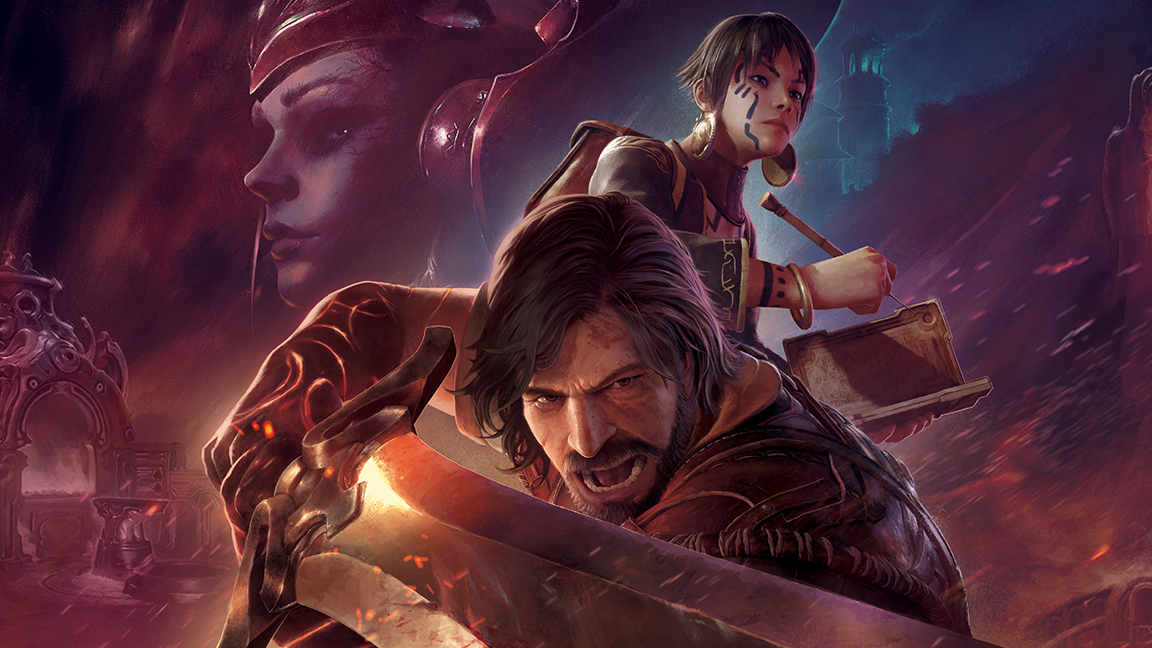

Publisher 505 Games
Developer MercurySteam
Release date 22 May
Format Xbox Series X, PC, PS5 (reviewed)
Platform Mercury Engine 6
With Blades of Fire developer MercurySteam has chipped a sword tip into the overcrowded Soulslike genre, hammered it, wrestled with it, and pried open a new vein of original thinking – weapon and combat customisation – and surrounded it in one of the most beautifully devised worlds I played. It helps the game looks like The Labyrinth era Jim Henson with a splash of Goya and a deep cut of Conan.
Knowing this Spanish studio was behind Metroid: Samus Returns and Castlevania: Lords of Shadow comes with great expectations, but I wasn't let down from the moment the adventure began. The blend of high-fantasy spectacle married to tactile, gritty gameplay (heads explode within minutes of play) grabbed me immediately.
Honestly, even though I loved speaking with MercurySteam's CEO Enric Álvarez for an insight into the art, I didn't expect Blades of Fire to be this good. It's not just another action RPG, this is a richly imagined, visually mesmerising and mechanically satisfying beast of a game with a cinematic approach that often surprises. MercurySteam has decided to make a Soulslike that isn't afraid of colour, whimsy or unrestrained weirdness.
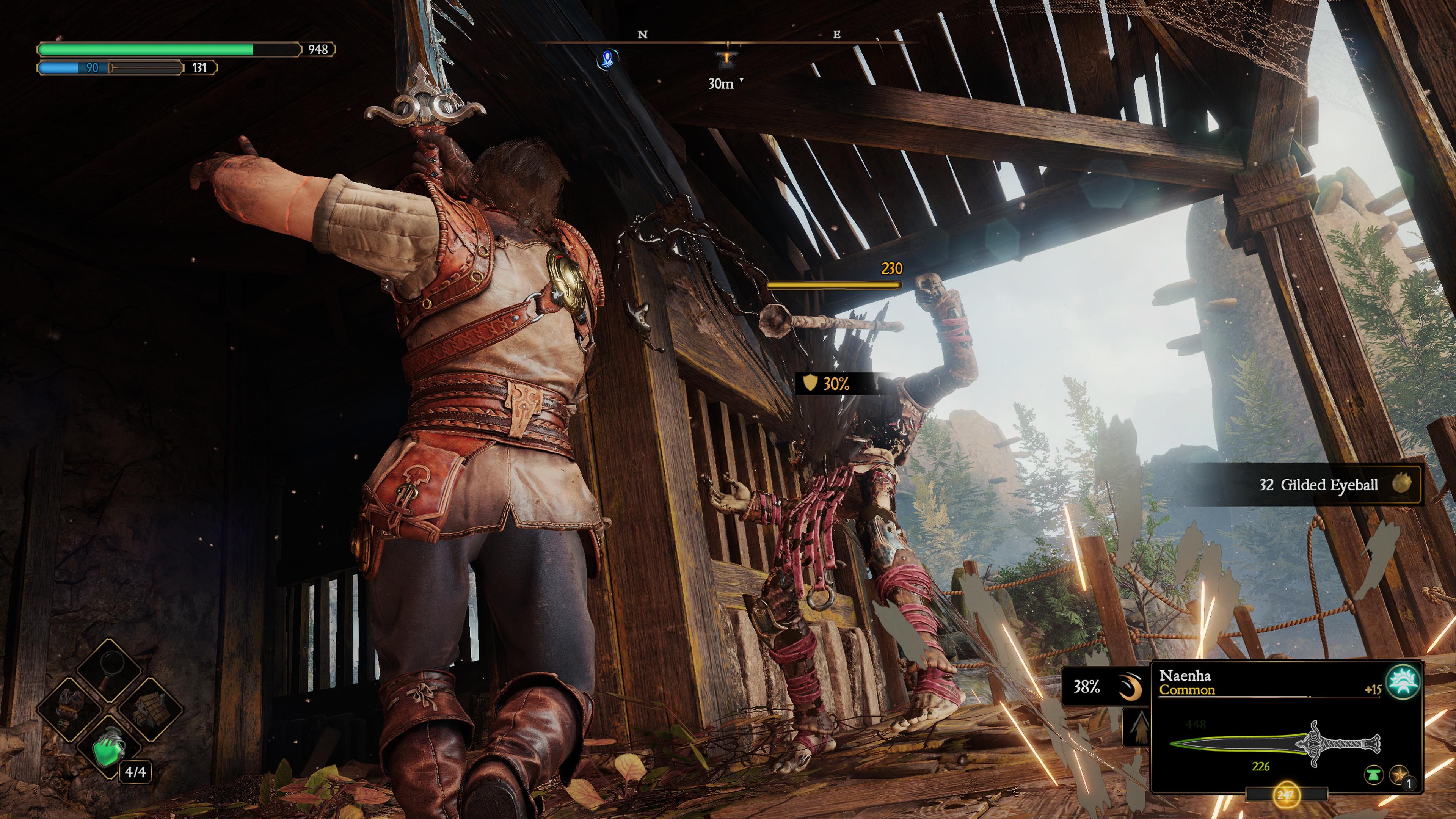
Light touch narrative
Not wanting to dwell on the story, because there are twists and turns to enjoy, but the basic pitch is: Aran de Lira, a world weary warrior, is dragged from self-imposed isolation to begrudgingly take on one more quest, to kill Queen Nerea who's embraced dark magic, turned steel to stone and unleashed foul creatures into the world.
Aran's special power? He can craft and forge awesome weapons from anything. Companion Adso de Zelk, a student monk, will draw the creatures you kill for weapon research, as well as translate the ancient ruins, runes and tombs you stumble across.
The narrative is delivered with a light touch. The cryptic environmental storytelling notes and guides are occasional emboldened by wonderfully animated vignettes that feel straight out of a 1980s dark fantasy epic – a stylish mash-up of Excalibur and Krull.
Just when the journey can ware you down with another back-tracked run through a horde of skeleton warriors you'll meet King Toki, a farting purple ogre who may or may not want to eat Adso, or you drop into the treasure room of a large, bulbous spider-like sabre-swinging min-boss… who farts a lot. There's a lot of farting.
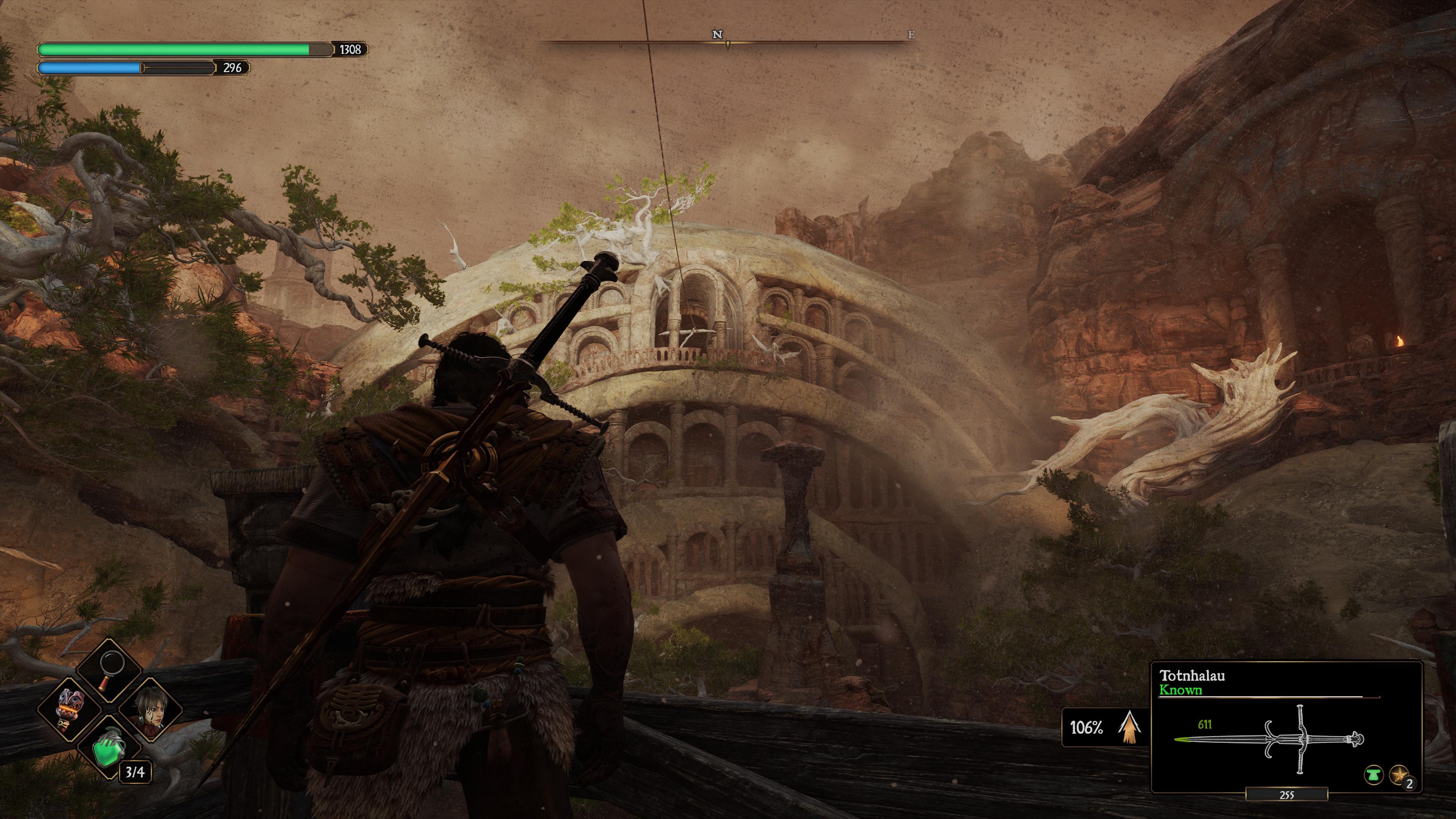
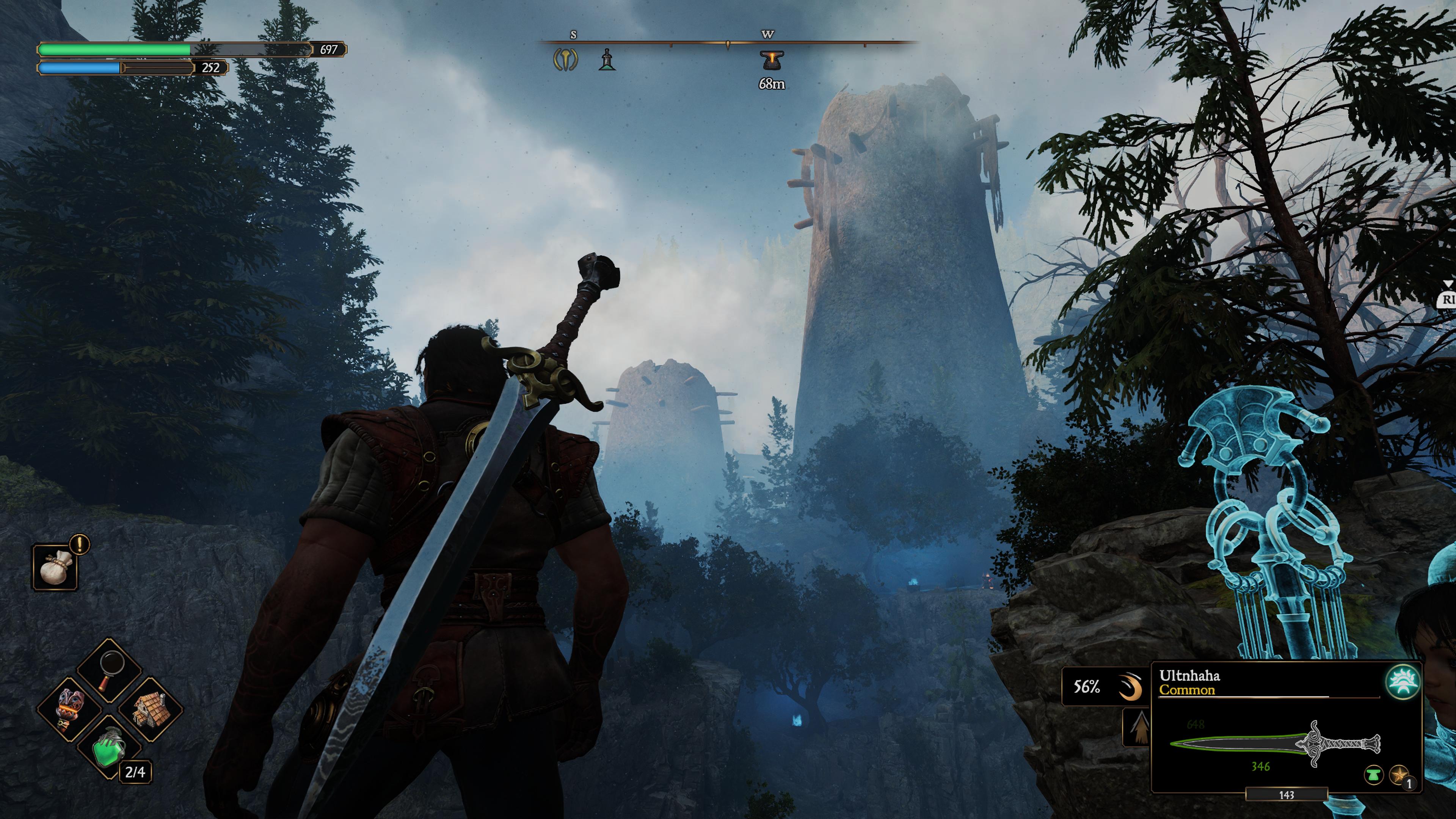
While combat draws inspiration from the Soulslike genre – this is cut and thrust duelling and parrying – the game's structure is a more akin to Castlebvania or God of War Ragnarok, and in some ways Blades of Fire finds balance in picking from both concepts – it's structure over hand-holding but done in a more accessible way than From Software hits like Elden Ring.
So while there's a hub-based semi-open world setup, not unlike Demon’s Souls, the layered, nonlinear progression and interconnecting routes of Blades of Fire feel less stressful, with Forge respawn points easy to find, and complex maps that reward exploration. Fundamentally, MercurySteam always pushes you forwards to new areas, new realms and new sights; you can backtrack and re-run old maps (and will need to on occasion), and more rewards lay in wait if you do, armed with new knowledge, but the momentum is always to the next horizon.
Each 'realm' has its own visual and gameplay identity – ranging from the mist and mud of Kar-Lethel Swamp to the decayed glamour of The Crimson Fort, and the Goya-like curved sandy nooks of The City of Curved Stones. This fantasy world is a tapestry of dark fantasies stitched together with a uniquely colourful and bold style.
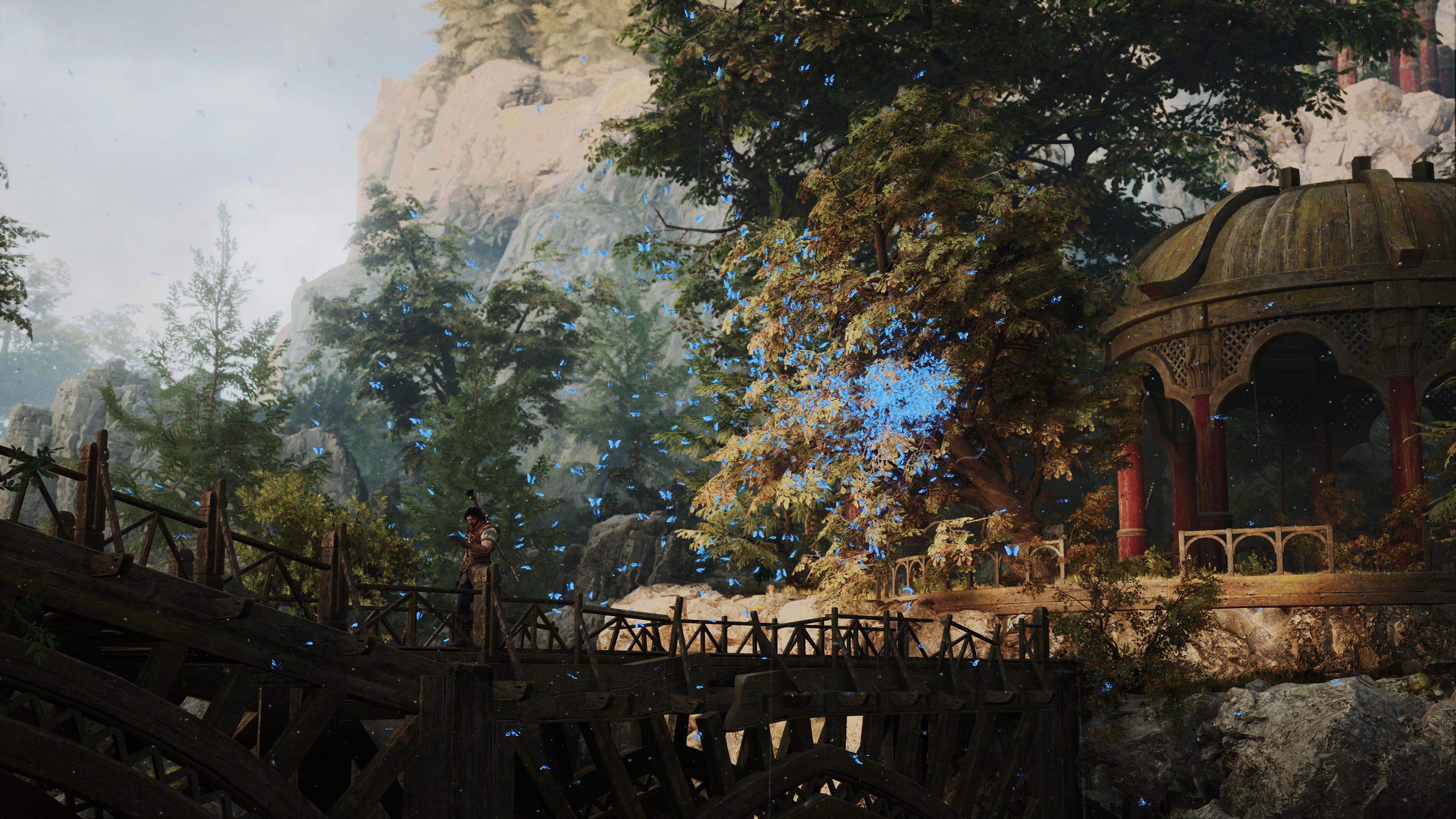
The beauty of good art direction
Blades of Fire is one of the most visually distinct games released for some time. The art direction channels the whimsical fantasy of The Dark Crystal with the muscular '80s movie feel of Conan the Barbarian. Character models are sinewy, grotesque and often appear to have been carved onto the screen. Some enemies lurch and shudder like neglected puppets, some sweep elegantly across the screen.
The influences go deeper than cinematic nods. There are elements of Polish artist Zdzisław Beksiński's surrealism in the game's jagged altars and haunted spires, with a glimpse of Jean Giraud (Moebius) in the game's character design. There's a funny little cone-hat wearing, pear-nosed creature that randomly appears during a sombre ritual, reads a scroll, mutters, farts (why, of course) and leaves, and it's the most Moebius thing I've seen in years.
Caravaggio’s chiaroscuro informs the game's lighting, with high contrast between gloom and glimmer intensifying the mood and pastels unexpectedly burst with acid greens and violets. The way torchlight caresses the textured edges of a cracked shrine, or how sunlight cast through clouds hits the drop of a cliff face, is just beautiful.
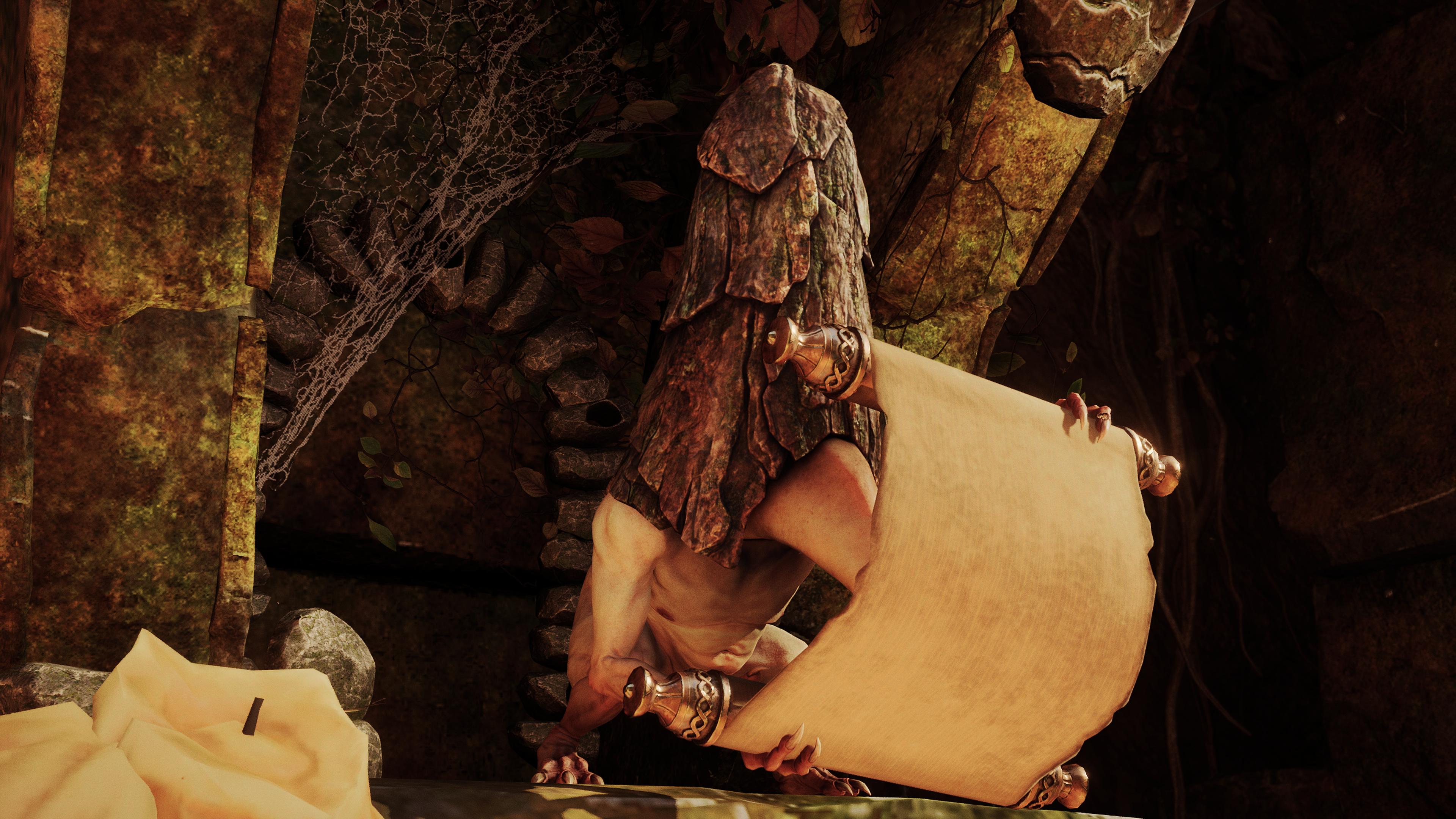
As with the world, the game's creature design is unique and, in a way, practical – creatures feel sculpted rather than modelled. They're animated with a tactile awkwardness that makes each one feel grounded, yet fantastical. I love the rudely blunt Gilda – a swamp witch who'll trade old weapons for materials – who is Henson's eyeball pulling Aughra. But it's the creatures you battle that impress, such as a giant troll skewed by its past fights, its body is a stabbed with old swords, that can't be killed until it's decapitated – at which point it cartwheels around the screen trying to recover it head while I attempt to land the killer blow.
There’s a sense of mythology here, as if each creature had a story long before you arrived. There's a logic behind the madness, even if it's not always explained. You feel the lore in each creature design, look closely and there's a story to tell.
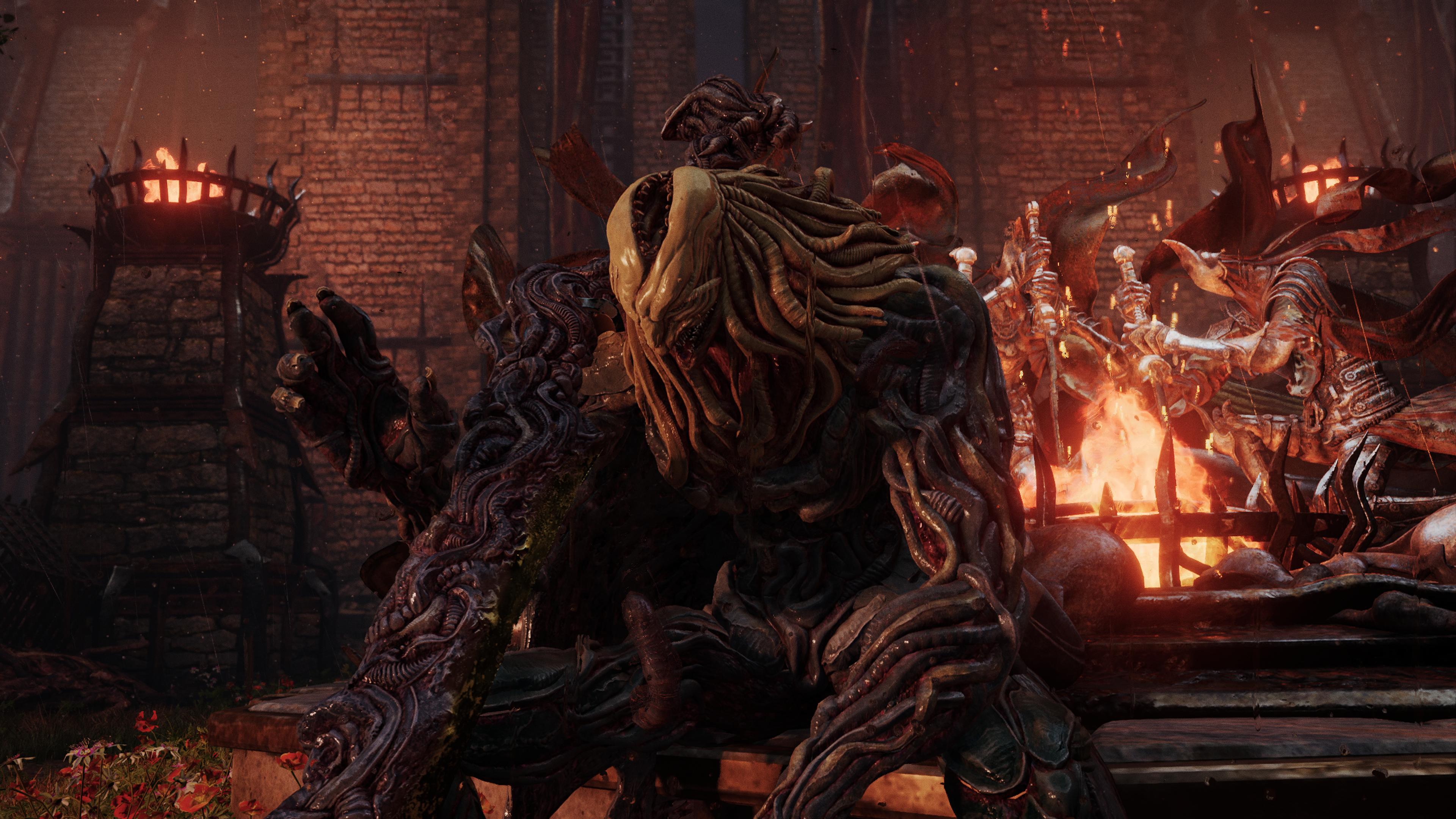
If you build it…
Of course, good design is nothing without gameplay, and combat in Blades of Fire is tactical, deliberate and brutal – but it's the weapon crafting system that elevates this game above its peers. That niche, the new idea MercurySteam has found, is a simple one – stats are embedded in weapons not character upgrading, and each weapon and combat stance has pros and cons against different enemies.
Rather than simply collecting swords or axes with preset stats, MercurySteam has created a unique weapon-building system that encourages experimentation and customisation, one where you must physically hammer – puzzle-like – the hot metal into the ideal shape.
Weapons are built from components (blade, hilt, etc) and each part affects different attributes – damage, speed, stamina, blocking and more. Weapons are divided into categories, such as axes, swords, great swords, spears and more, but it's the build that matters. There are forge scrolls to discover by presenting weapons to totems found in the world – these blueprints build perfect versions of each weapon and unlock more repair stars. Weapons degrade, can be sharpened and repaired, but will ultimately break.
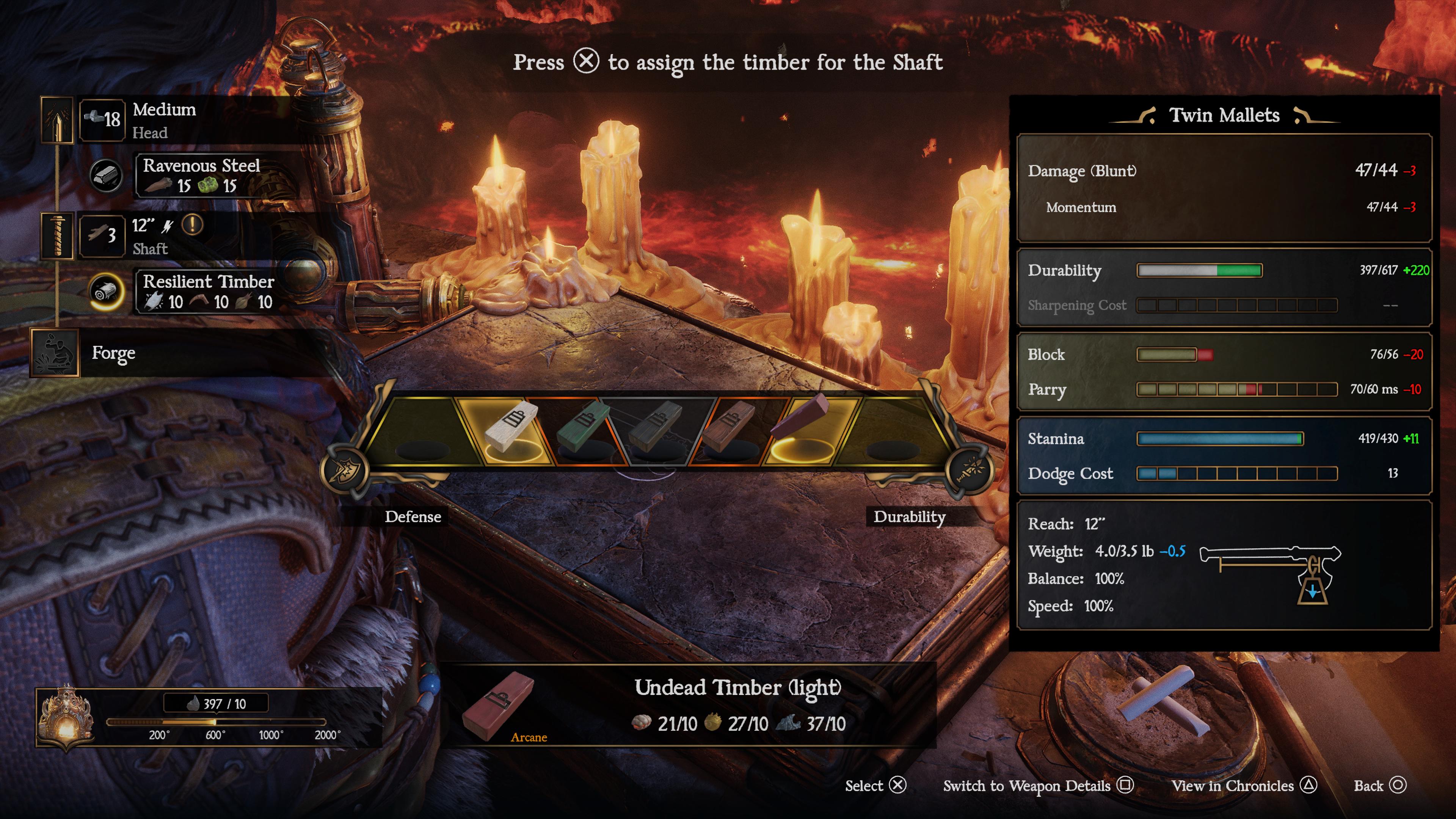
So here's the thing – you begin to covet good weapons you've built from rare materials, which means using lesser weapons for basic fights and saving favourites for bosses and min-boss encounters. But you also need specific weapons for certain fights – highlighting an enemy reveals if a weapon will deliver high or low damage, or bounce of bluntly. Changing from slashing to piercing can also have an effect.
There are dodge-rolls, parries and counters to make use of, but again this is piped through the hand-crafted weapon setup that forces you to embody a fighting style. Create a fencing sword and you naturally begin patiently stalking enemies, where dodging and parrying becomes a focus.
Digging deeper, each face button controls a weapon swing that targets a specific body part – head, torso, left arm and right arm – and again, some enemies are weaker in certain areas that need to hit. But hold on, many creatures will change they own attack stances, shifting weak spots on the fly, forcing you to adapt, change tactics and even swap-out to alternative weapons.

Enemy AI is smart without being unfair, and encounters often involve clever terrain use – ledges to bait foes off is common place, but you too can be brushed off a broken rampart. Combined with the unique weapons and creature design – stone statues shrug off their debris and become elegant fencing demons, Blades of Fire encourages constant adaptation.
All in, combat becomes incredibly tactical and thoughtful, where not just which weapon you use, but how it's been made, with what materials and the stance its used in, can all affect the battle. Blades of Fire has shrugged off any me-too Demon's Souls shackles and found its own space in the genre.
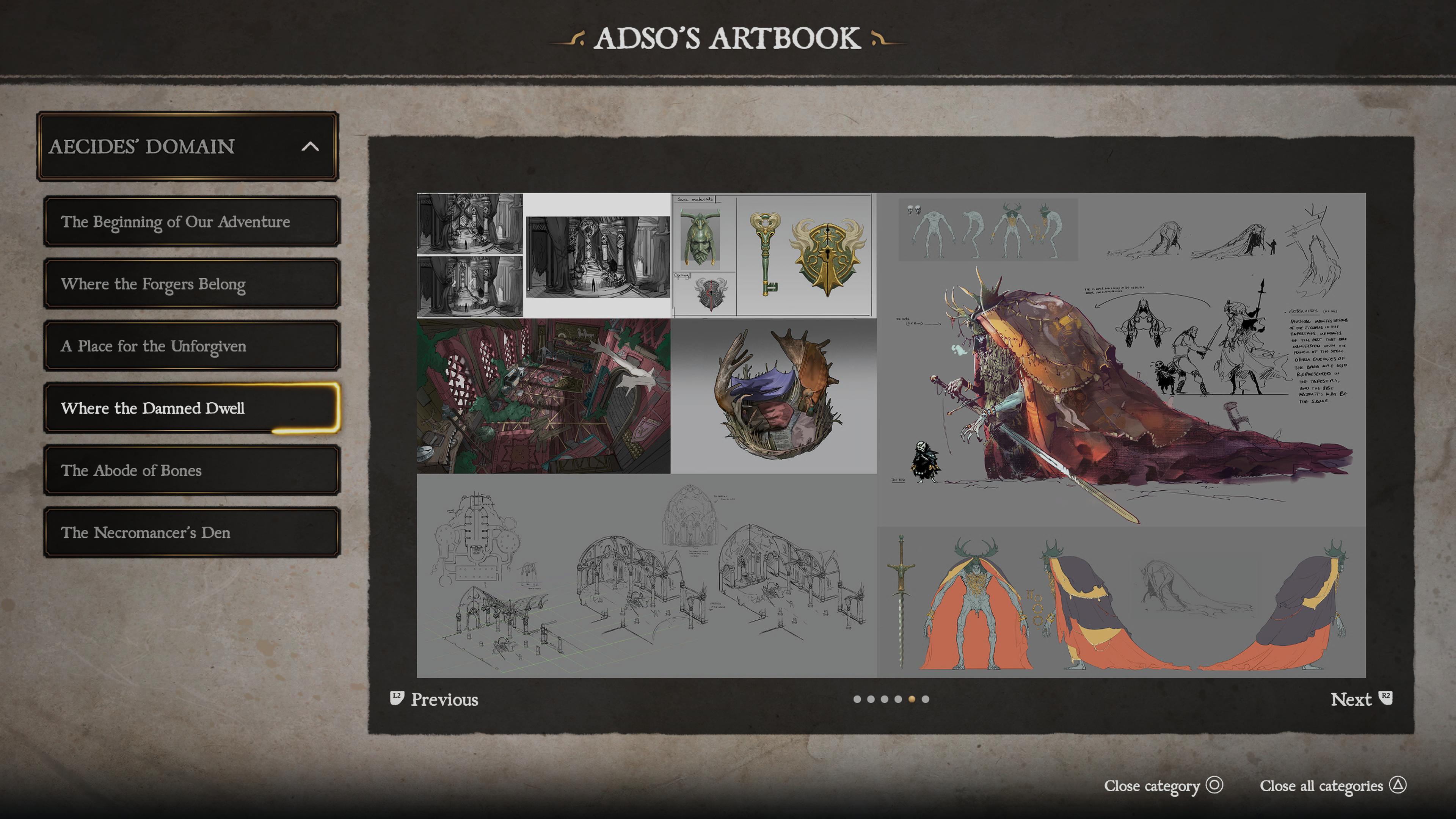
A chip in the armour?
Does this mean everything always works? Not always. With many Forge respawn points to hand you never get that same balance of fear and reward From Software is so good at, and you never lose a weapon, it remains permanently in world until you choose collect it. So die hard Soulslike gamers who sweated through Sekiro could find Blades of Fire less challenging.
There are occasions too, where I was lost. The enigmatic gradual unfurling of the world and its lore can mean you'll wander in circles looking for a clue as to what to do next or where to go, what to collect, or what all those vague statues and shrines actually do. But when it clicks, when you push through and begin to peel back the game's secrets, it's genuinely satisfying.

Blades of Fire isn’t trying to be yet another Soulslike but thankfully has hammered out its own identity in an overcrowded genre. It’s marching to the beat of a warped war drum, while wearing a cloak made of Muppet fur, while dragging a bloodied bag of nostalgic '80s art and cinematic references.
It’s ambitious, can be occasionally ambiguous, but Blades of Fire is relentlessly original and delivers a fantasy world unlike anything else you've experienced. Blades of Fire is a glorious oddity.







